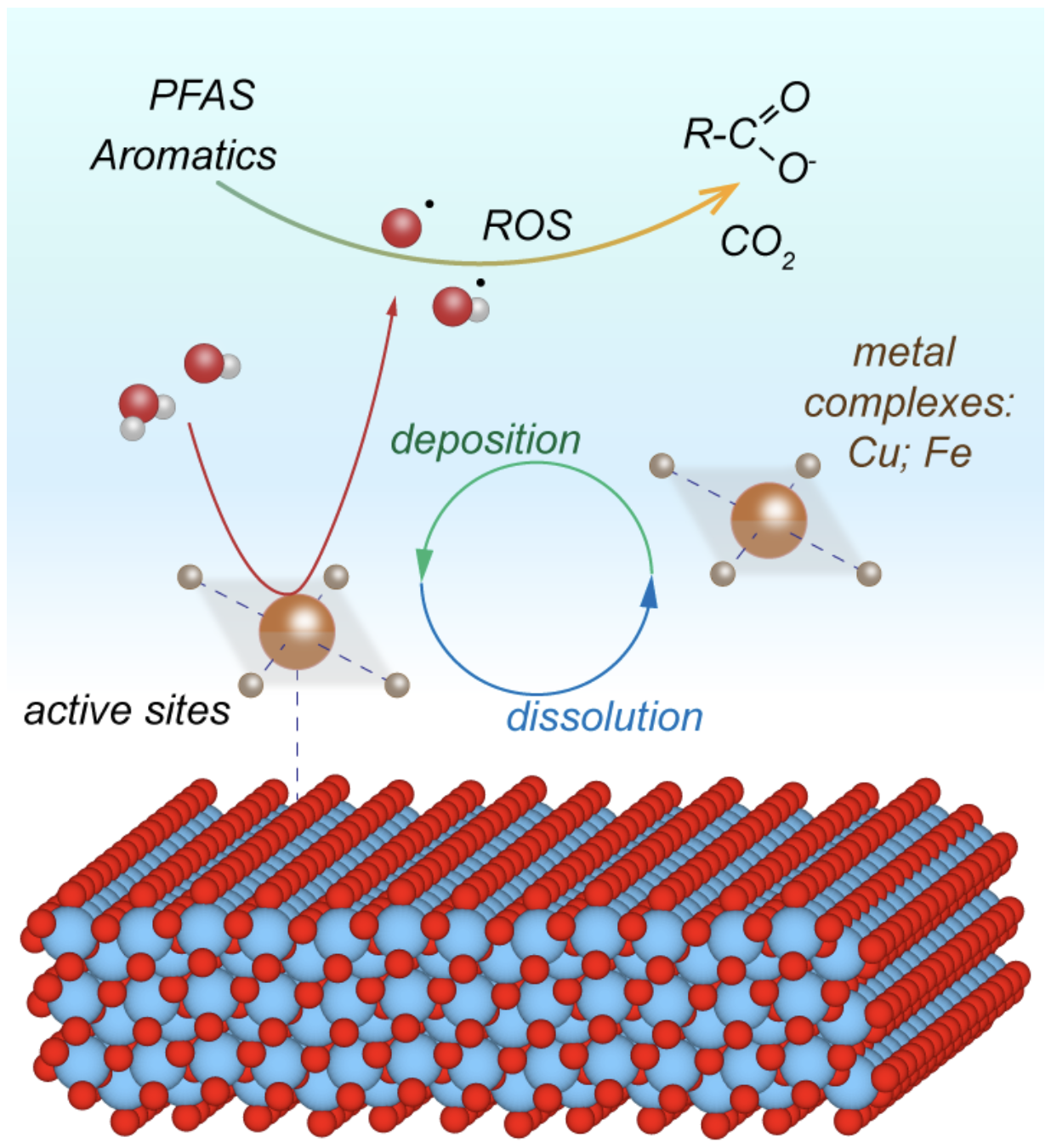Thrust Leader: Karen Mulfort
Thrust Deputy Leader: Paul Fenter
Principal Investigators: Chibueze Amanchukwu, Giulia Galli, Alex Martinson, Pietro Papa Lopes, Andrei Tokmakoff
While efforts to identify efficient and effective processes for splitting water using sunlight as an energy source are ongoing, there are opportunities to exploit the advances in catalytic science gained in those studies to create new (electro)catalytic materials and reaction pathways for the direct decomposition of pollutants - as well as to create reactive species in water with potential use in remediation.
In Thrust 2, we aim to understand the materials design principles required for effective and selective chemical transformations relevant to water remediation by:
- Predicting and synthesizing catalysts that are resilient under electro-active aqueous environments.
- Identifying new mechanisms to drive selective electrocatalysis in complex aqueous mixtures.
We propose that mapping defect sites on the surfaces of single crystals and thin films of electrode materials and determining how the defect configurations evolve with applied bias over time will provide an understanding of the pathways required to create self-healing electrocatalyst materials through the control of defect concentration and identity. Tunable nanoporous MOx membranes will be used to probe the structural properties of physical microenvironments, specifically targeting pore diameters approaching confinement where the interfacial effects dominate the water and solute properties, and how this influences the electrocatalytic degradation of aqueous contaminants.
Equipment/ Tools
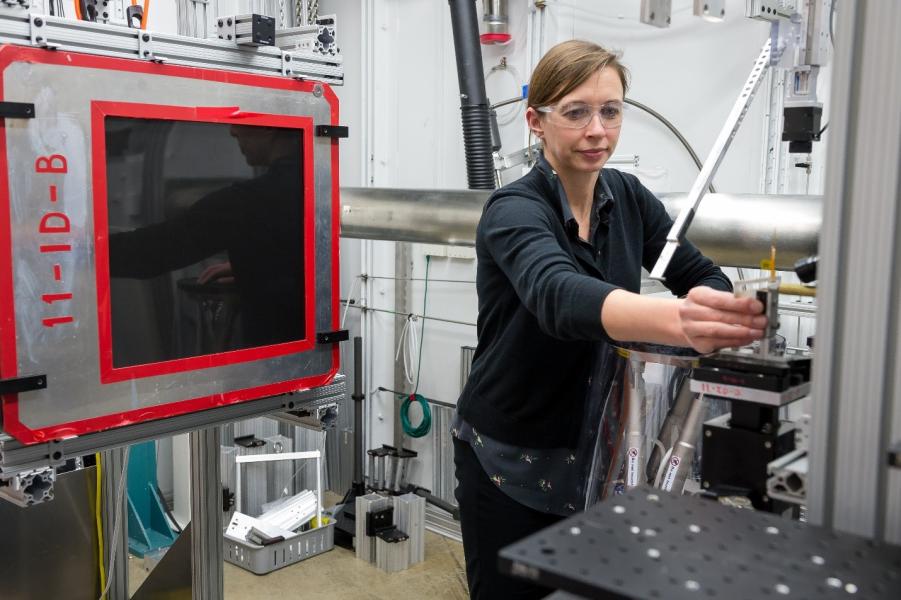
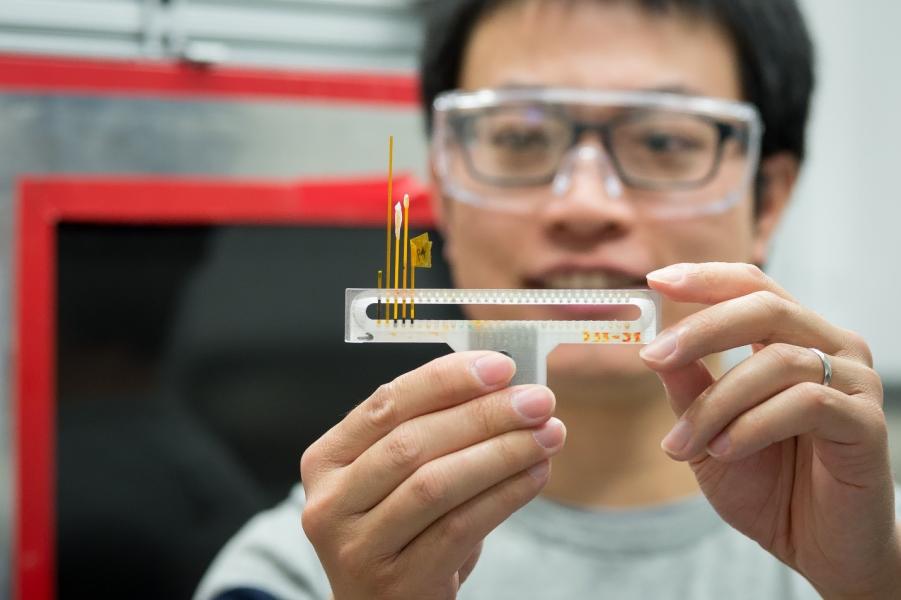
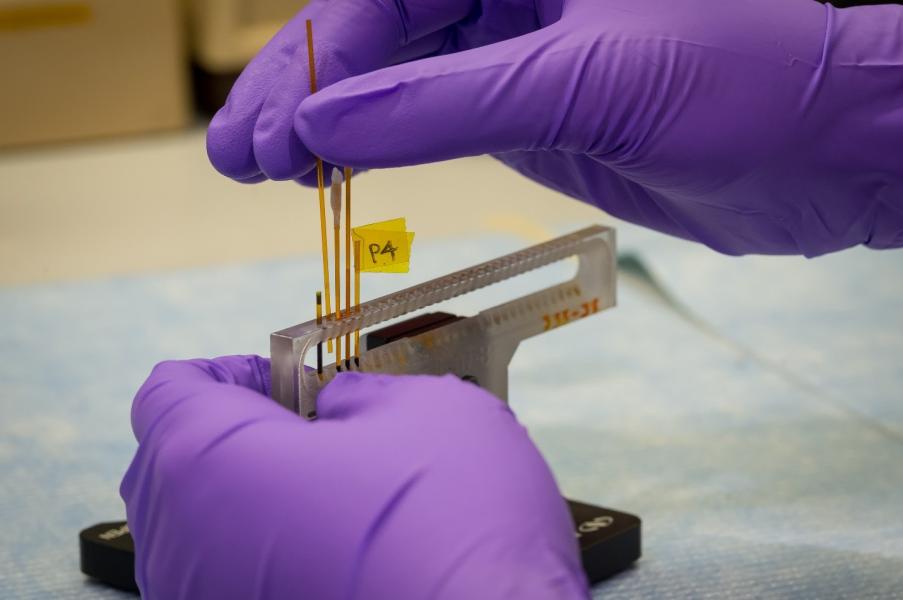
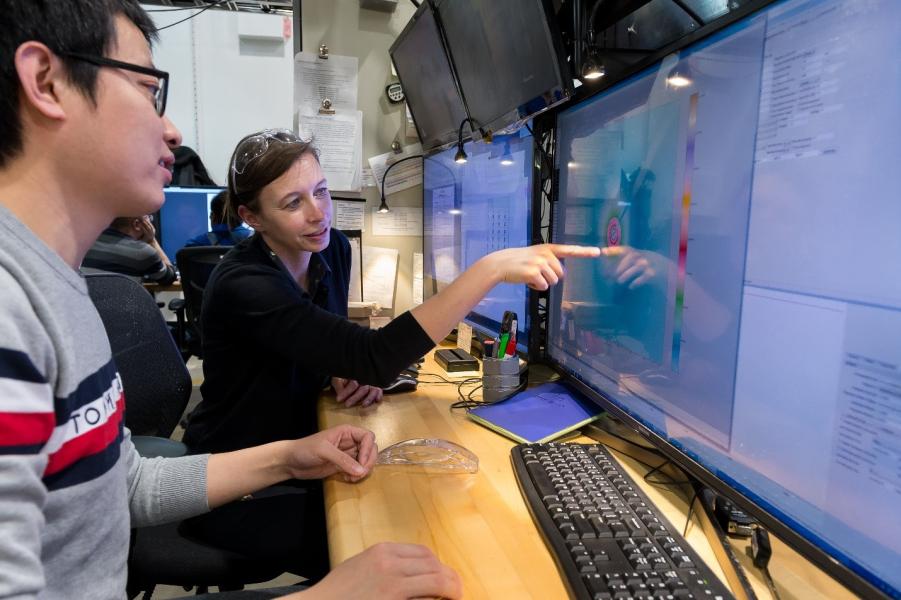
Advanced Photon Source
- The Advanced Photon Source (APS) at Argonne enables researchers to conduct in-situ, high-energy X-ray scattering and pair distribution function analysis of nanopore-confined catalysts.
- The AMEWS team is developing X-ray scattering techniques that exploit APS as a unique high-energy X-ray light source to decipher atomic scale structure for pore-confined interfacial water remediation catalysts under functional (operando) electrochemical conditions.
- This work combines with AMEWS synthesis and modeling approaches to tackle fundamental questions of how confinement and interfacial chemistries can be controlled to create interfacial chemical reactivity for water remediation chemistry.
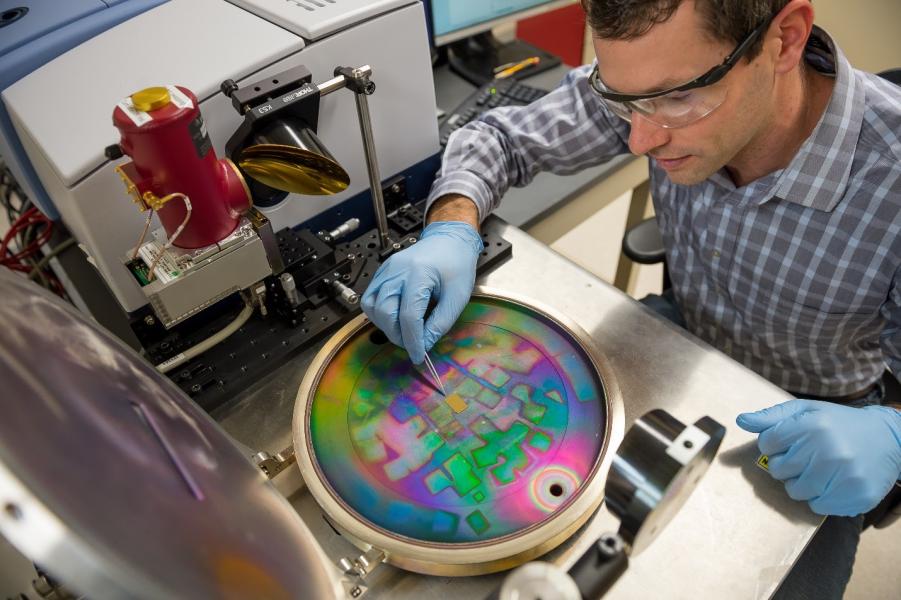
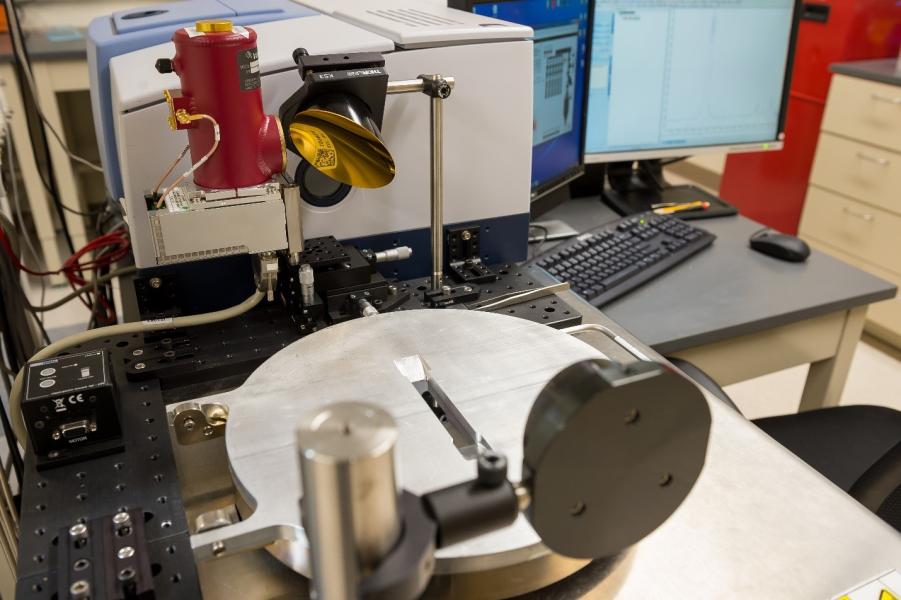
Atomic layer deposition tool equipped with in-situ infrared spectroscopy
- Atomic layer deposition tool equipped with stop valve enables long chemical exposures required for sequential infiltration synthesis (SIS).
- Supplies a wide variety of chemical precursors into small working volume for efficient precursor utilization.
- In situ infrared spectroscopy offers chemical insight into polymer, precursor, adduct, and byproduct formation during SIS processing.
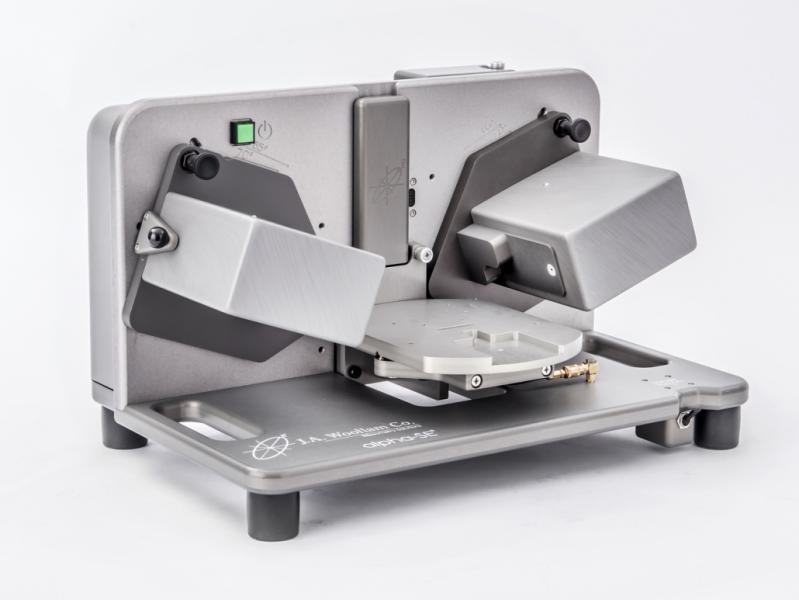
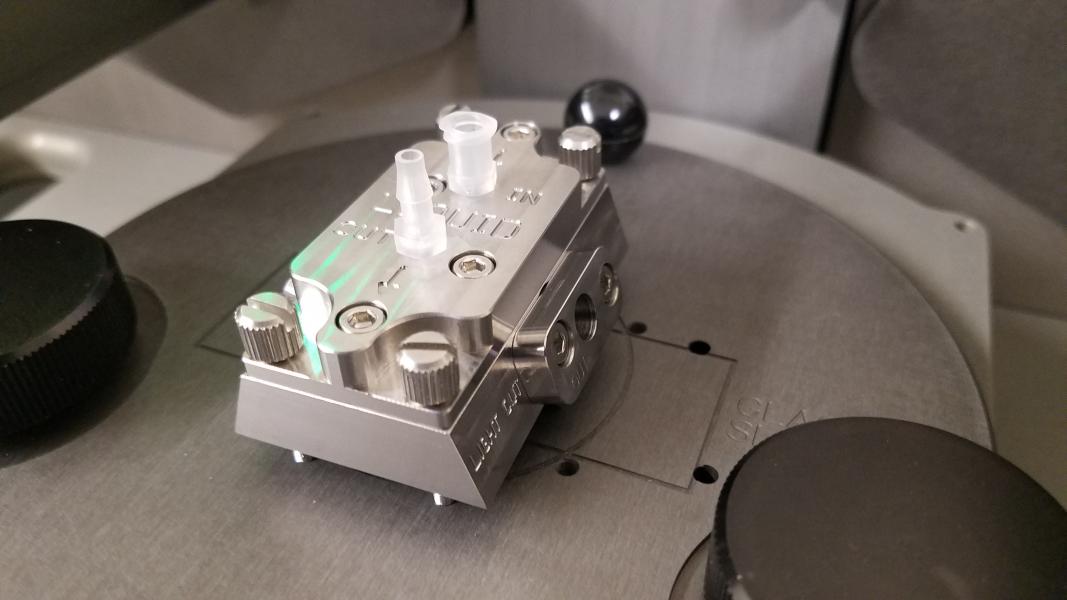
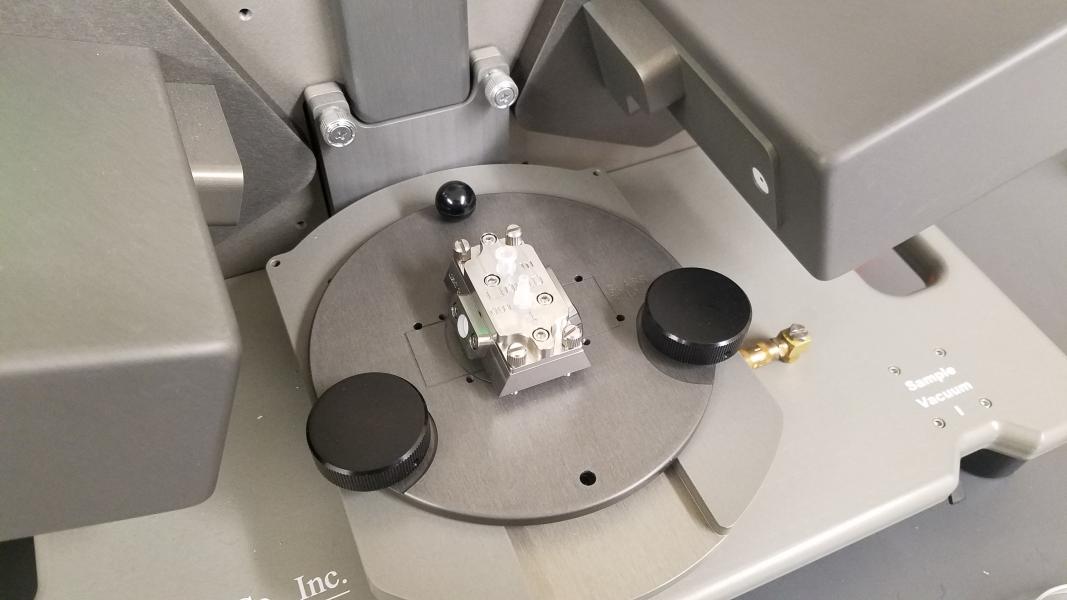
Ellipsometer with a liquid cell
- In-situ ellipsometry for understanding SIS kinetics and watching ALD growth.
- Ex-situ, variable-angle ellipsometry for deconvoluting the polymer and inorganic components of SIS composites.
- Equipped with a humidity controller to perform ellipsometric porosimetery, which can reveal pore size and volume of newly synthesized porous membranes.
- Equipped with a liquid sample cell that can be used to measure polymer brush thickness and density in a variety of aqueous environments (in collaboration with T1).
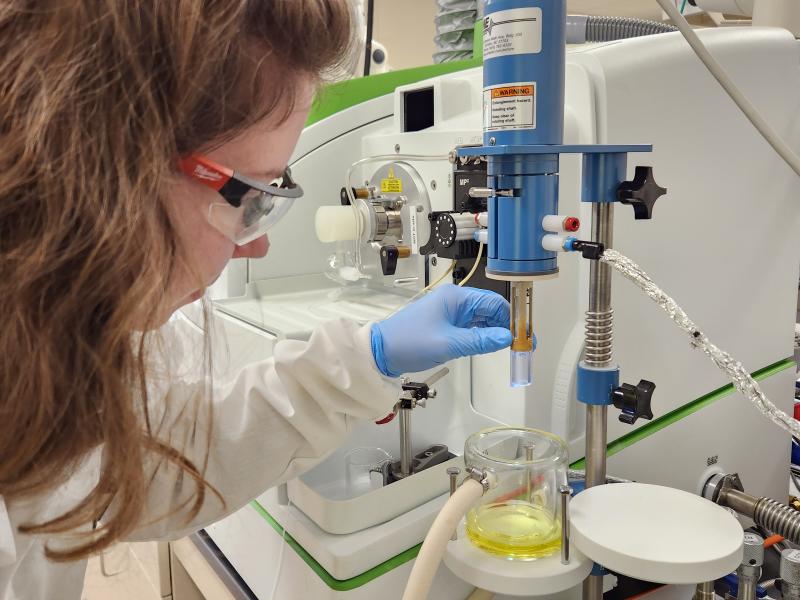
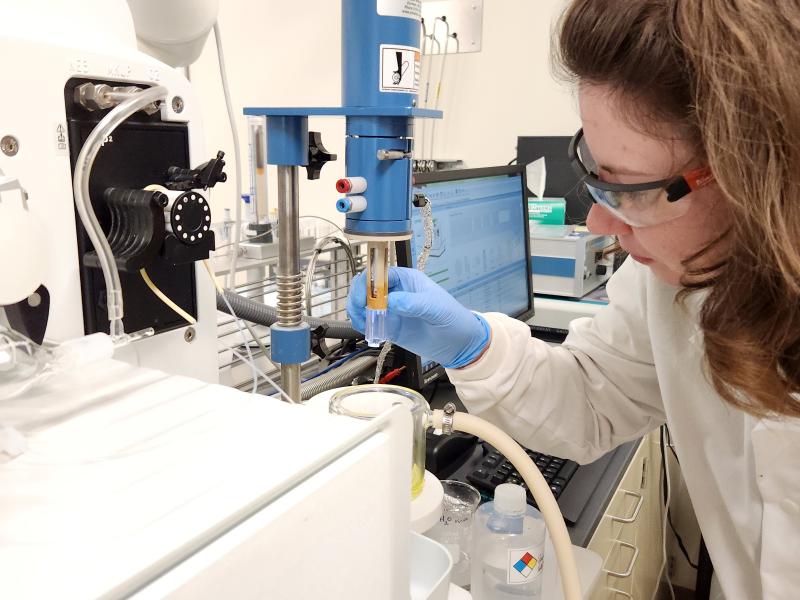
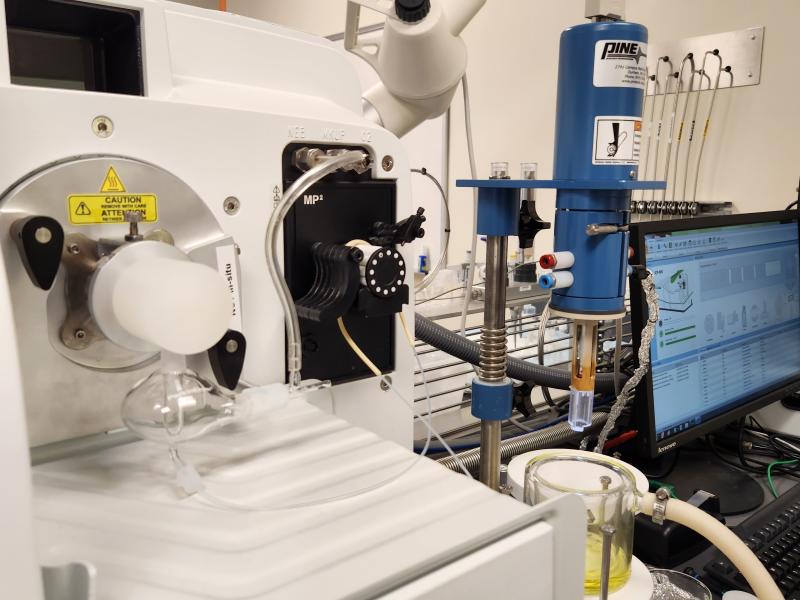
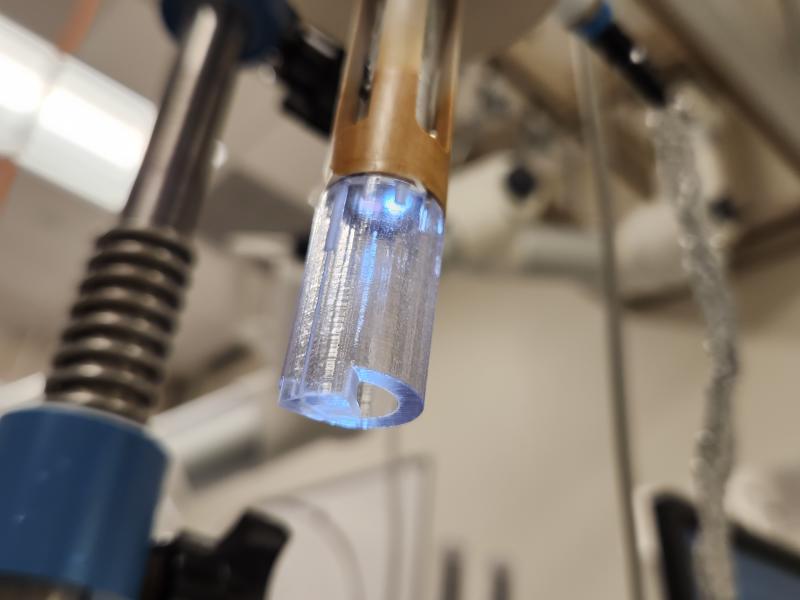
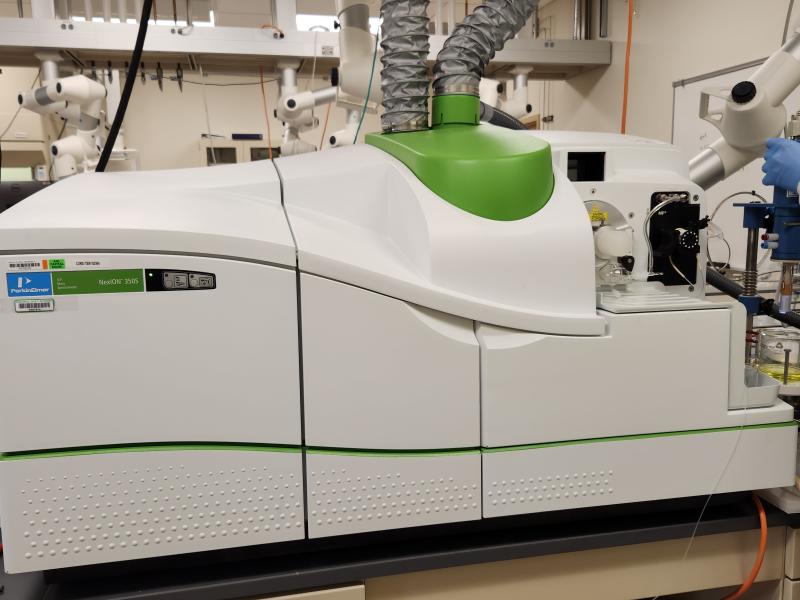
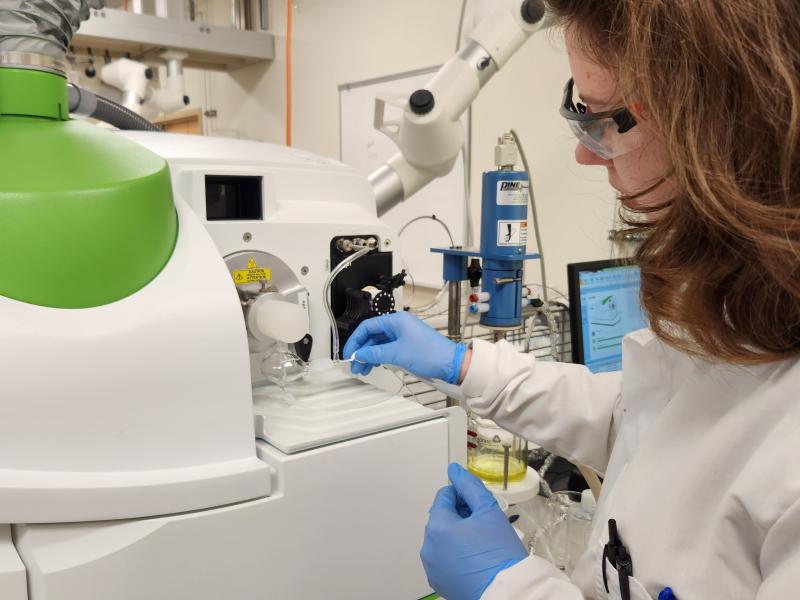
Inductively Coupled Plasma Mass Spectrometry for in-situ electrochemical dissolution studies
- Reveals the dynamics of surface atom removal and consequent changes to surface morphology.
- Coupling to a stationary probe rotating disk electrode allows for quantitative dissolution rate measurement at pg.cm-2.s-1 levels for almost any element in the periodic table.
- System suitable for measuring single crystal surfaces, thin films, nanoparticles, as well as surface-bound molecular catalysts.
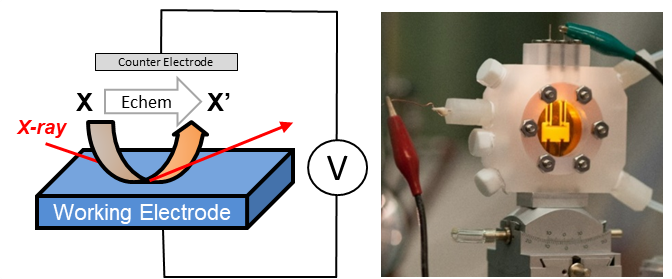
X-ray Reflectivity (XR) for Operando Observations of Water-Electrode Electrochemical Interactions
- XR probes the interfacial structure (including the vertical fluid distributions and electrode structure)
- Coupling with resonant reflectivity probes element-specific distributions as well as sensitivity to oxidation state
- Measurements at hard X-ray synchrotron facilities (e.g., Advanced Photon Source) enables rapid measurement of interfacial evolution
